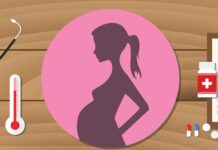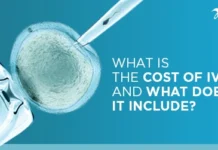A reader sent a mail to get information on the A to Z to post exposure prophylaxis (PEP).
Hello Sir. I am in distress. I had a sexual intercourse with a random lady in my area 24 hours ago only for me to find out she was HIV positive and she is even on ARV medications. Though, I used condom but it got broken twice during the act. I am so scared. A friend of mine told me that there is a drug called PEP taken by those that have been exposed to HIV and if taken within 72 hours may protect me from getting infected with HIV. Please can I get this drug, how much is it, how will I take it? What are the side effects of Post Exposure Prophylaxis for HIV? Does it work?
………..Anonymous from Abuja………..
Please help me…..
My reply……
Post exposure Prophylaxis is the care or medications given to individuals that have been exposed to a deadly disease to prevent then from developing that disease. There is PEP for hepatitis B, rabies, tetanus, HIV and many others. In this situation i know you are talking of PEP for HIV.
I will give you vital information on post exposure prophylaxis to the best of my knowledge, personal experience and research.
Post-exposure prophylaxis (PEP) means taking HIV medicines very soon after a possible exposure to HIV to prevent becoming infected with HIV. It is intended for emergency situations. It is not meant for regular use by people who may be exposed to HIV frequently. PEP must be started within 72 hours (3 days) after a possible exposure to HIV. The sooner you start PEP after a possible HIV exposure, the better. If you are prescribed PEP, you will take HIV medicines every day for 28 days.
Drug combination that makes up PEP
The most commonly recommended drug for PEP is the combination of Tenofovir ( TDF) Lamivudine (3TC) Efavirenz (EFV).
Others are a combination of Tenofovir ( TDF) + Lamivudine (3TC) + Dolutegravir. (DTG).
The combination of Zidovudine ( AZT) + Lamivudine (3TC) + Nevirapine ( NVP) is also administered in some cases.
However, there are some antiretroviral drugs used for the treatment of HIV infection that may be considered for PEP in special circumstances. One of such drugs is Zalcitabine (2′-3′-dideoxycytidine, ddC), also called dideoxycytidine, a drug sold under the trade name Hivid. It was the third antiretroviral to be approved by the Food and Drug Administration (FDA) for the treatment of HIV/AIDS.
The combination recommended for children includes Abacavir (ABC) + Lamivudine (3TC)+ ritonavir-boosted Lopinavir (LPV/r).
Who should take PEP?
If you think you were recently exposed to HIV, contact your health care provider immediately or go to an emergency room right away.
You may be prescribed PEP if you are HIV negative or don’t know your HIV status, and in the last 72 hours you:
- Think you may have been exposed to HIV during sex (condom breakage or from unprotected sex)
- Shared needles or drug preparation equipment (works)
- Were raped
- HIV exposed blood spilled on your face, mouth or breached skin.
- Health care worker with needle stick injury from a possibly HIV exposed person.
When should PEP be started?
PEP must be started within 72 hours (3 days) after a possible exposure to HIV. The sooner you start PEP after a possible HIV exposure, the better. According to research, PEP will most likely not prevent HIV infection if it is started more than 72 hours after a person is exposed to HIV. Make haste.
For how long will you take PEP?
PEP is taken every day for 28 days (4weeks). A tablet is taken every day for 28 days. Please do not skip doses. Ensure you return to your doctor for clinical evaluation and follow-up HIV tests.
Does PEP work?
Yes. It is effective in preventing HIV infection when it’s taken correctly and according to doctor’s prescription but it’s not 100% effective. Outcome is better if you start taking PEP early after a possible HIV exposure. But while on PEP, still be careful, use condom during sex, avoid multiple sexual partners and take extra care to prevent further needle sticks injury. Please if you skip doses, PEP will not work.
Side effects
The is where the problem with post exposure prophylaxis lies. Some many authors are saying the side effects are mild but contrary to what i have seen in all patients and colleagues on PEP. The side effects could be severe and sometimes cause absence from work or excuse from duty for the 28 days they took the dtugs. But the advantages in this situation outweighs the disadvantages- in this situation, no other option, you must take the drugs. Anyway, you may experience mild symptoms.
The common side effects are nausea, vomitting, lethargy, fatigue, abdominal pains, diarrhoea, headaches, running nose, muscle aches and so on.
What happens after I take PEP?
You need to visit your nurese or doctor for follow-up testing after you finish PEP. You’ll get another HIV test 4-6 weeks after you were first exposed to HIV, and then you’ll be tested again 3 months later. Depending on your situation, your doctor may recommend another HIV test 6 months later.
It’s really important to get these follow-up tests to make sure post exposure prophylaxis worked.
Where to get HIV PEP and Cost
It is free in teaching hospitals, federal medical centres and all other hospitals under PEPFAR. Post exposure prophylaxis are also given for free at all government approved HIV counselling and testing centres across Nigeria.
Many pharmacies do not stock HIV PEP because Nigerian government already provide them for free for its citizens. Few pharmacy shops with the drugs I put calls to however, confirmed they cell post exposure prophylaxis for HIV for around #17,000 to #20,000 naira for a full course of 28 days.

Credit: AIDsmap
Mr. Anonymous, since you are in Federal Capital Territory, go to the National Hospital, Abuja. They have a HIV testing and counselling department. Talk to them about your problems. They will test you and give you HIV PEP drugs for free, ensure you take them religious and return back to them for follow-up after 28 days of the medications.
Goodluck and best wishes.
Sources:
























